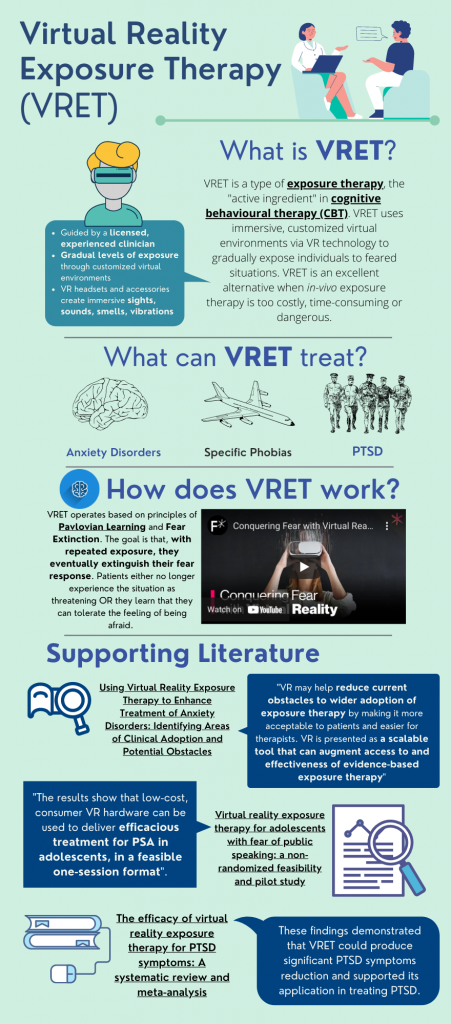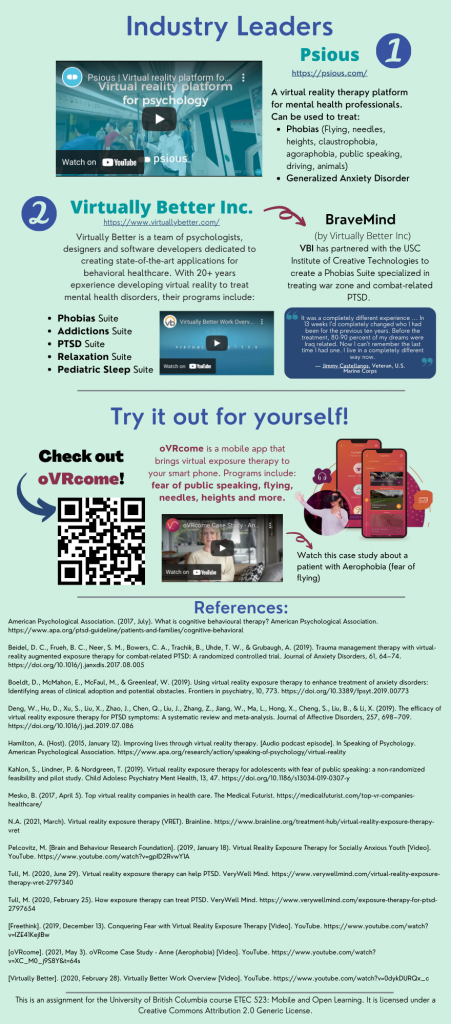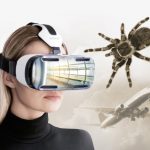Please check out the 2-page infographic I created which explores how VR is currently being used as an alternative to in-vivo exposure therapy in treating Post-Traumatic Stress Disorder, Generalized Anxiety Disorder and specific phobias.
I will also attach the infographic as images below, but I encourage you to view it using the link, as there are some embedded videos that are worth viewing on the mobile device of your choosing!



Hi Alexis, I just learned about VR therapy in ETEC 512. Here is a great article that summarizes its uses in therapy: Bohil, C., Alicea, B., & Biocca, F. (Nov, 2011). Virtual reality in neuroscience research and therapy. Nature Reviews Neuroscience.
Thanks Olivia!
Hi Alexis,
I enjoyed reading this infographic; well done.
I encourage everyone to go to the link as there are a few great videos, totally worth watching. First time I started reading articles on VR exposure therapy was only a few months ago. I found it fascinating how therapists exposed the individuals to stressful environments (I think it was fear of heights), and after repeated attempts, patients reported reduced levels of discomfort. One thing that I find extremely interesting is that as VR solutions improve, the clinical availability and treatment options also expand. I would imagine that in a few years, how VRET is implemented in clinical settings would undergo major positive changes/improvements as the VR technology progresses. Great topic, thank you for this.
I completely agree! I wonder if AR may also lend itself well to exposure therapy for certain phobias and anxiety disorders, having patients navigate around their actual environments, but encountering the feared stimulus in the form of a hologram.